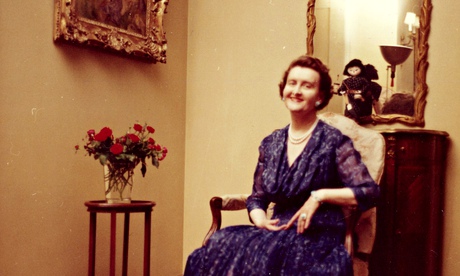
In case you couldn't tell from the title, or the soft-focus shot of a mammoth slab of French baroque on the cover, Empty Mansions is a piece of property porn. Indeed, the book starts out with its main author, Pulitzer prize-winning journalist Bill Dedman, trawling the web looking at houses he "really couldn't afford". One of the houses he chanced upon was Le Beau Château, a 22-room pile set in 52 acres of prime Connecticut. This was in 2009, a year into the great recession, and "the beautiful castle" was on offer at $24m – down from the original asking price of $35m.
It turned out that the house belonged to Huguette Clark – a woman who hadn't set foot in it since buying it in 1951. Nor was it her only pad. She had a bigger place, Bellosguardo, in Santa Barbara, California, where she hadn't been seen for 50 years. And at 907 Fifth Avenue, overlooking Central Park, there were not one but three apartments in her name. No sir, the doorman told Dedman, he hadn't seen her for 20 years or more.
So far, so noir. Yet the reader whose interest is piqued by the words "Mysterious Life" in Dedman's subtitle shouldn't get too excited. Murder isn't on the menu, though we do get close to kidnap and blackmail. Above all, though, what we have here is a morality tale. The moral is that money can't buy you happiness – an old saw, to be sure, and one very useful to the rich, who love stories that tell the poor how unhappy they'd be if they had money. Just this once, though, the saw cuts true.
Huguette was born in 1906, the second child of the then 67-year-old US Senator William A Clark and his 28-year-old second wife, Anna La Chapelle. A copper-mining robber baron, Clark was one of the richest men in America. When he died, in 1925, he left around $3.5bn in today's money. Four children having survived from his first marriage (and her sister, Andrée, having died of meningitis at 16), a fifth of this fortune went to the 19-year-old Huguette . What "the most prominent debutante" of her age chose to do with it forms the bulk of Dedman's narrative.
For starters, she got married – to Bill Gower, the son of her father's accountant. The union lasted nine months, which sounds like a disaster but isn't all that bad when you consider that Huguette had pretty much told her husband it was over during their honeymoon. She wanted to be home, with her dolls.
Huguette was a big fan of hina-ningyo – rare Japanese models that she dressed with one-off designs from the House of Dior. Sometimes, when invited out, she'd take a doll along for companionship. Not that she went out very often. Huguette was a recluse whose whereabouts not even her close relatives knew. Lucky them, you'd have to say. On the rare occasions she called her cousin, Dedman's co-author Paul Clark Newell Jr, their conversations (several of which are reproduced in the book) ceased being dull only in order to be banal.
The only people Huguette was vaguely close to were the staff at New York's Beth Israel medical centre. She spent the final 20 years of her life there, watching reruns of The Flintstones (whose scripts she had a secretary transcribe). Physically, there was nothing wrong with her, yet she received round-the-clock care, most of it from Hadassah Peri, a nurse who called her "such a lovely woman". Certainly she was a generous one. During her stay at the hospital, Huguette handed over to Hadassah a Bentley, seven homes and just shy of $39m.
Soon enough, Hadassah's colleagues wanted some of it, too. They began "borrowing" money from Huguette, and one doctor persuaded her to pay for the decorating of his house. Only when someone started telling her that the hospital would have to close unless she donated $125m did she finally say no. Even then, her will – written suspiciously close to her death in 2011 – left nothing to her family, dividing up her fortune among medics and lawyers.
It's a ghastly story, nicely summed up by Dedman as "a classic folk tale – except told in reverse, with the bags full of gold arriving at the beginning, the handsome prince fleeing, and the king's daughter locking herself away in the tower". It's also, though, the classic American tale – the story of the desperate isolation wealth brings. What was Huguette's hospital fastness but the Xanadu in which Charles Foster Kane holes up? What were those dolls but the suits and shirts Jay Gatsby cocoons himself within?
Alas, Denman's book is nowhere near the equal of those masterpieces of narrative. It is way too long, ponderously chronological, and laden with detail that has no purchase on the story proper. Worst of all, it fights shy of its central implication. You'd have to be mad not to spot that Huguette Clark was mentally ill. Yet Dedman goes on insisting that his subject "lived a surprisingly rich life", for all the world as if wooden dolls and hired help were substitutes for meaningful human contact.

